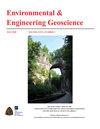入侵种紫穗槐的清除方法——以紫穗槐为例
IF 0.7
4区 工程技术
Q4 ENGINEERING, ENVIRONMENTAL
引用次数: 0
摘要
紫穗槐(Amorpha fruticosa)是一种入侵植物,分布在广泛的生境类型中,包括低地洪泛平原。它生长得非常密集,通过抑制本地物种来改变群落的组成,导致该地区植物群的多样性大大减少。在Odransko polje,紫穗槐广泛分布。“西萨克地区防洪系统”项目的适当评估任务之一是确定堤防施工材料的取用地点。无论是从自然保护的角度还是从经济角度(靠近堤岸以降低材料运输成本,地点不是私有财产等)来看,这些地点都应该是可以接受的。建议在以木香为优势植物的地点进行挖掘。本文将概述该入侵物种的清除和处理方法,以减少其传播和再次出现的可能性。此外,利用建议地点进行材料挖掘的积极影响将会显示出来,如减少金针菇的丰度,增加栖息地多样性,增加目标栖息地和目标物种栖息地等。此外,亦会提供选择挖掘地点的良好做法,包括挖掘地点的卫生及景观设计指引。本文章由计算机程序翻译,如有差异,请以英文原文为准。
Removal methods for invasive species Amorpha fruticosa – example of Odransko polje
Amorpha fruticosa is an invasive plant species that occurs in wide range of habitat types, including lowland floodplains. It grows very dense and changes the composition of communities by suppressing indigenous species, resulting in significantly reduced variety of flora in the area. In Odransko polje Amorpha fruticosa is widely spread. One of the tasks of Appropriate assessment of project "Flood protection system of Sisak area" was to determine the locations where material for embankment construction should be taken. The locations should be acceptable both from the aspect of nature protection and from the economic point of view (proximity to embankment due to lowering material transport costs, locations which are not private property, etc.). The locations where A. fruticosa is dominant plant were suggested for excavation. This paper will give overview of removal and disposal methods for this invasive species, which reduce the possibility of its spreading and reappearing. Also, positive impacts of using proposed locations for material excavation will be shown – decrease in A. fruticosa abundance, increase of habitat diversity, increase in the presence of target habitats and target species habitats etc. Additionally, good practices for selection of excavation sites will be given, including guidelines for their sanation and landscape design.
求助全文
通过发布文献求助,成功后即可免费获取论文全文。
去求助
来源期刊

Environmental & Engineering Geoscience
地学-地球科学综合
CiteScore
2.10
自引率
0.00%
发文量
25
审稿时长
>12 weeks
期刊介绍:
The Environmental & Engineering Geoscience Journal publishes peer-reviewed manuscripts that address issues relating to the interaction of people with hydrologic and geologic systems. Theoretical and applied contributions are appropriate, and the primary criteria for acceptance are scientific and technical merit.
 求助内容:
求助内容: 应助结果提醒方式:
应助结果提醒方式:


